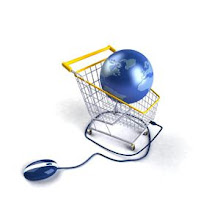
What is E-commerce?
Electronic commerce, normally known as e-commerce, can be defined as a moderm business methodology that fulfill the needs of organisations, merchants, and consumers. E-commerce is any business related transactions partially or totally carried out by electronic medium especially on internet using Open networks or Closed network. The most attractive feature of e-commerce is it allows people to buy or sell anything at anytime and anywhere. It also helps to reduce the costs and increase the speed of delivery. E-commerse is not just about buying and selling, it also consists of electronically communicating, colloborating, and discovering information. It is about e-learning, e-government and etc.
History and Evolution of E-commerce
The history of e-commerce is a history of how information technology has transformed business process. The meaning of e-commerce has changed over the last 30 years. Originally, e-commerce is only an electronically tool that facilitate the commercial transactions by using Electronic Date Interchange (EDI) and Electronic Funds Transfer (EFT). EDI is used to transfer electronic documents from one computer system to another. EFT is used to perform financial transactions electronically. These were both introduced in late 1970s. The acceptance of credit cards, automatic telling machine (ATM), and telephone banking in the 1980s were also another form of E-commerce. Another form of e-commerce includes arline reservation system, online shopping, and etc.

History and Evolution of E-commerce
The history of e-commerce is a history of how information technology has transformed business process. The meaning of e-commerce has changed over the last 30 years. Originally, e-commerce is only an electronically tool that facilitate the commercial transactions by using Electronic Date Interchange (EDI) and Electronic Funds Transfer (EFT). EDI is used to transfer electronic documents from one computer system to another. EFT is used to perform financial transactions electronically. These were both introduced in late 1970s. The acceptance of credit cards, automatic telling machine (ATM), and telephone banking in the 1980s were also another form of E-commerce. Another form of e-commerce includes arline reservation system, online shopping, and etc.

In 1991, Tim Berners-Lee developed World Wide Web and started the first internet transaction.
Later in 1993, graphic web browse which are Mosiac and Netscape, were develop by Marc Andreessen. On the other hand, Microsoft came up with Microsoft Internet Explorer. In 1991, DSL was lauched into market, which is a family of technologies that provides digital data transmission over the wires of a local telephone network. The development of Linux is considers as a major improvement of e-commerce. Linux is one of the most prominent examples of free and open sourse software collaboration.
Amazon and eBay were the first International companies that implemented electronic transactions. According to the Internet audience measurement website, Amazon attracts approx imately 50 million U.S. consumers to its website on a monthly basis. As conclusion, e-commerce already become a famous and success business methodology. By 2009, 47 percent of Business to Business (B2B) commerce was estimated to be carried out online.
imately 50 million U.S. consumers to its website on a monthly basis. As conclusion, e-commerce already become a famous and success business methodology. By 2009, 47 percent of Business to Business (B2B) commerce was estimated to be carried out online.
Later in 1993, graphic web browse which are Mosiac and Netscape, were develop by Marc Andreessen. On the other hand, Microsoft came up with Microsoft Internet Explorer. In 1991, DSL was lauched into market, which is a family of technologies that provides digital data transmission over the wires of a local telephone network. The development of Linux is considers as a major improvement of e-commerce. Linux is one of the most prominent examples of free and open sourse software collaboration.
Amazon and eBay were the first International companies that implemented electronic transactions. According to the Internet audience measurement website, Amazon attracts approx
 imately 50 million U.S. consumers to its website on a monthly basis. As conclusion, e-commerce already become a famous and success business methodology. By 2009, 47 percent of Business to Business (B2B) commerce was estimated to be carried out online.
imately 50 million U.S. consumers to its website on a monthly basis. As conclusion, e-commerce already become a famous and success business methodology. By 2009, 47 percent of Business to Business (B2B) commerce was estimated to be carried out online.


No comments:
Post a Comment